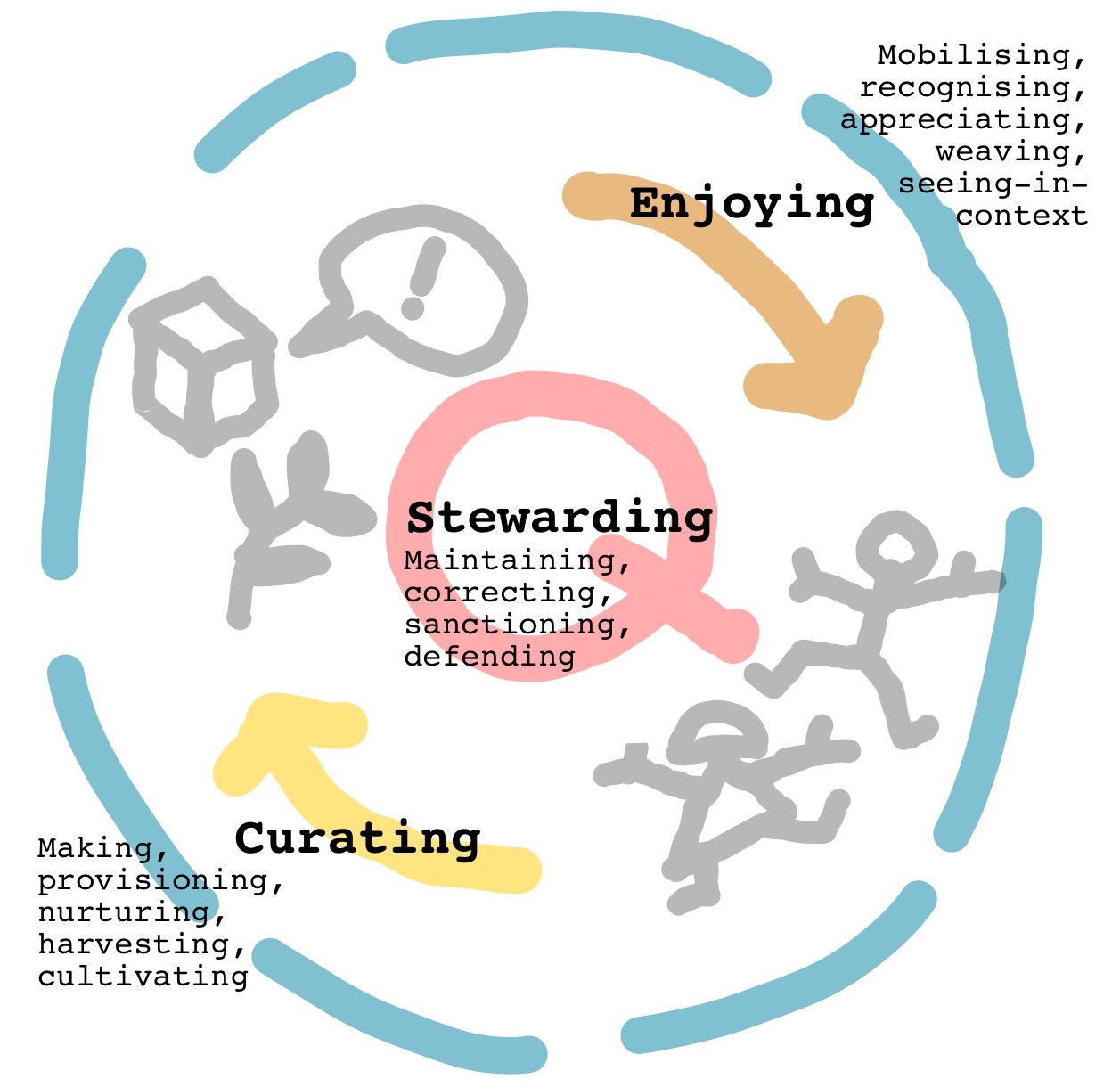Commoning is at the centre of pattern language for making ‘new economy’. It's not just that commoning is something **described in** the language, but it also is the form of pattern language **practice** itself. Commoning contains three constitutive dynamics or modes - curating, stewarding, and enjoying - and curating, stewarding and mobilising a *cultural commons* of pattern language is at the core of the proposal.

Curating, stewarding, enjoying - The three dynamics that make a living commons
These three modes or dynamics correspond directly to the three elements of a ‘triad of commoning’, identified by David Bollier and Silke Helfrich in an impressive and valuable programme of research. A pattern language of commoning They named these elements, respectively: - provisioning through commons, - peer governance and - the social life of commoning.
The alternative framing - curating/stewarding/enjoying - is used here for two reasons.
First, it has a more direct form, with active verbs rather than abstractions, and so invokes better the aesthetic of **making** an economy, through multiple modes of contribution.
And second, this set of terms expresses more plainly the skilful, aware practice of active, direct in-context **valuing** that runs all the way through a commons.
- Curating/provisioning is a valuing of needs and means and labour. - Stewarding/defending is a valuing of contributions and intentions and mutuality. - Enjoying/mobilising is a valuing of legacy and liberty and scope.
Curating, stewarding and enjoying figure centrally not only in the ‘curriculum’ of the college (as features of the living economy) but also **in practice in the college** . . its mode of action learning, action research, coproduction, steering (commons stewardship), and weaving of contributions.
These three constitutive dynamics apply across the full range of **material commons**, **cultural commons**, and **aesthetic commons** . . and again, this is so in the practice of the college - its ‘look-and-feel’ and its labour processes and relationships - as well as its curriculum content.
# See also - Commoning - Pattern languages as commons - Commoning as dual power